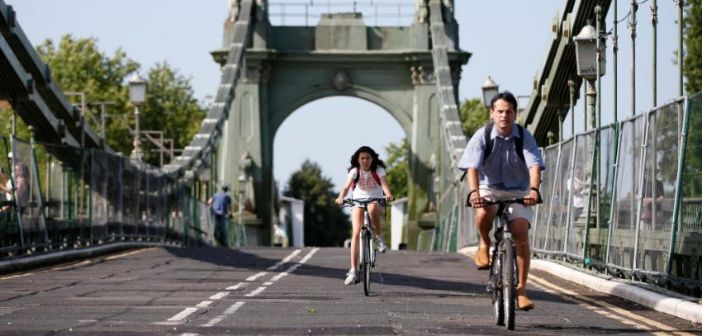Hammersmith & Fulham Council has approved a new £6m plan to stabilise Hammersmith Bridge, which has been closed since last August following urgent safety concerns.
The council’s appointed engineers Mott MacDonald expect to complete the work in under a year, for costs below the original expected investment.
According to the council, Mott MacDonald devised an alternative stabilisation plan, which will bring savings of £24m, and has now been chosen to replace the existing Pell Frischmann scheme.
H&F council commissioned Steve Denton, head of civil, bridge and ground engineering at consultants WSP, to compare the two options to stabilise the bridge’s cast iron pedestals. He concluded that the one proposed by Mott MacDonald would be technically superior, implemented more rapidly and more cost efficient than the £30m scheme presented by Pell Frischmann.
As well as the saving and reducing the works programme to 46 weeks, the new plan – which has been favourably reviewed by Historic England – is expected to reduce the need for temporary closures. Engineers believe it will also avoid the need to divert the gas mains on the bridge for the stabilisation work.
The proposal was presented to engineers and officials from the Department for Transport (DfT) and Transport for London (TfL) at a meeting with Steve Denton and H&F engineers held on 09 August.
H&F leader, Stephen Cowan, said: “We don’t want to lose a single day in delivering the full stabilisation of the bridge to ensure residents on both sides of the river no longer have to deal with closures or the threat of closures.
“Whilst putting the safety of the public first, we believe that the importance of maintaining pace and progress, the real savings achieved by the deployment of the preferred stabilisation works option and the current vulnerability of Hammersmith Bridge demands rapid action.”
Cowan added in order to expedite the works at speed, the council will go-ahead and fund the £6m package in anticipation that the DfT and TfL will subsequently reimburse the council.
The bridge was reopened to pedestrians, cyclists and river traffic on 17 July. Safety experts have stated that the use of the temperature control system, which enabled the reopening, can only be temporary.
The pedestrian stabilisation plan is the first phase of works on the bridge. The second phase will involve extensive strengthening and full restoration and will allow the bridge to reopen eventually to vehicles.
Denton is now considering the two current options for the strengthening and restoration work – the existing TfL plan and the Fosters + Partners/COWI proposal for a temporary double decker truss.





